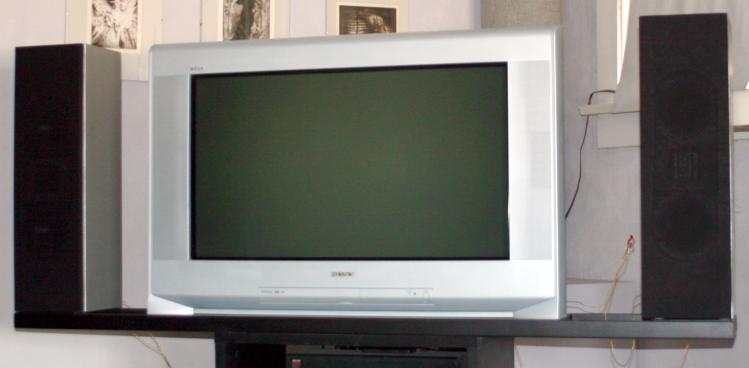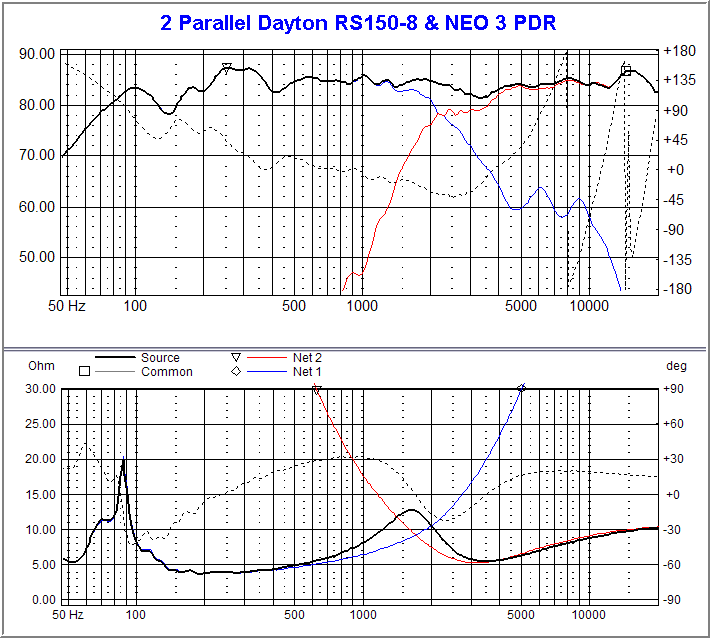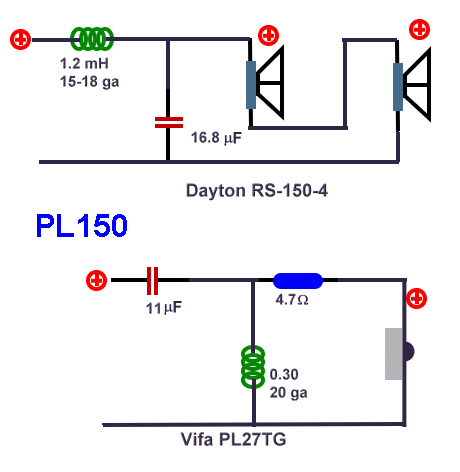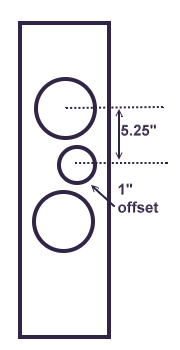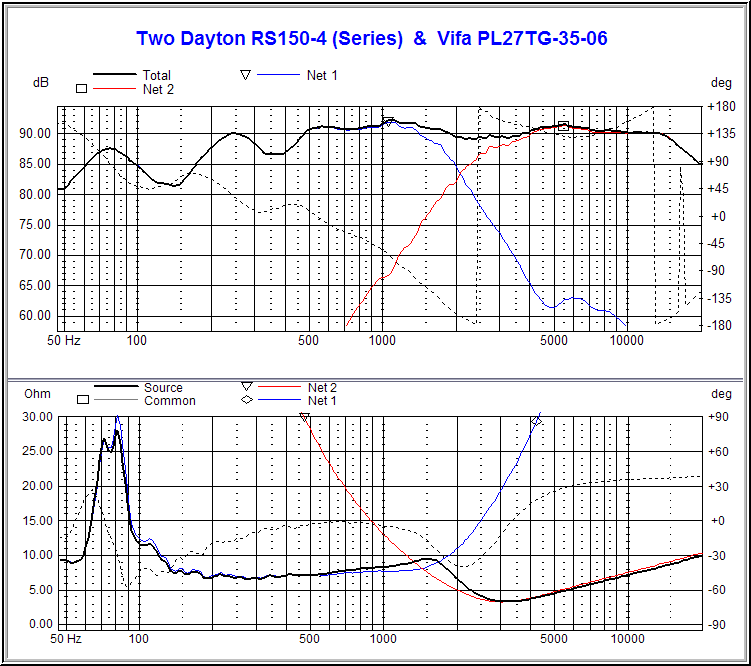Both have low component counts for the crossovers. They were built about the same time.
Neither uses any resonance traps, neither design seemed to need them.
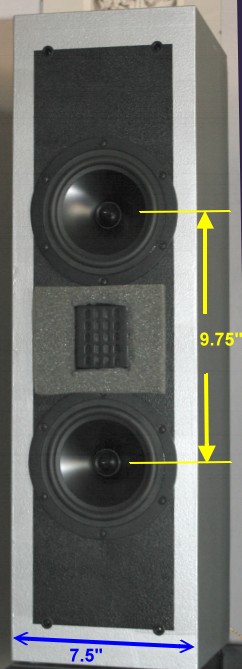
- 25.5 " High (To match TV) - 7.5 " Deep
- 14 Liters (0.5 cu ft) Sealed
- F3: 82 hz, Qbox = 0.7
- Drivers are surface mounted
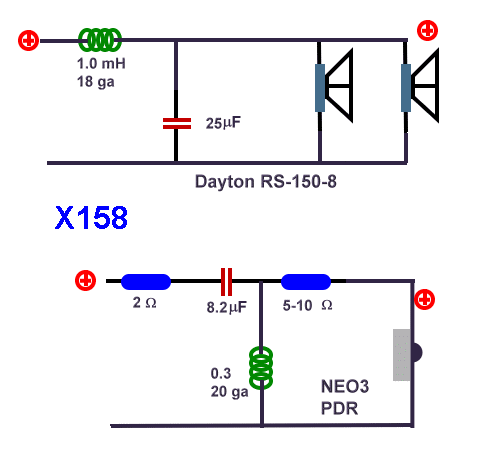
These were designed by Xavier as HT Mains. He wanted them to match up with his WEGA tube. (The silver Ralph Lauren paint actually came very close to the TV case.) So, everything needed to be shielded, and the towers needed to be the same height as the tube. Xavier chose the RS150-8 and NEO3 PDR for this build. We wanted to reduce driver spacing to accomodate a lower crossover point, so we chose to surface mount the NEO with no faceplate.
With an MDF baffle, we cut a square hole with a sabersaw. A bit of work with some drill bits to allow for the rivets on the NEO, and the driver was ready to mount. We soldered the leads, then passed them thru a piece of masonite we used to seal the back of the mounting hole. When finished, a careful bead of hot melt sealed in the NEO.
I worked up 3 different crossovers using different topologies, and notch filters for the breakup mode of the RS-150. After trying just about all of the combinations, we both agreed this one was the best of the bunch. With only 6 components, it also was the simplest. Final crossover is about 2100Hz. Despite the model showing only 25 db of depression on the breakup modes, we didn't hear the breakup (or find it objectionable if we did hear it). The impedance curve is quite benign and should provide no major issues for modern gear.
Even sealed, these had fairly decent bass. At 82 hz, these would still be best on "small" settings or using 70-90hz as a rolloff to the sub. Overall, these have a very spacious, detailed, smooth sound. Vocals, horns & percussion are all very accurately reproduced. The slight BBC dip really smoothes out the response. We included a rear fire tweeter (borrowed from the Cyclops design.) In practice, Xavier thought the NEO dispersion (in all directions) was better than many domes, hence the rear fire tweeter didn't add much to the design.
The padding resistor is shown as 5-10 ohms. When we voiced these in shop, we wound up at about 6 ohms. When Xavier set these up in his home with an HK receiver, and digital satellite feed, he thought 10 was a better compromise setting. This seems to be consistent with planars, the "perfect" setting is really a function of the source & and gear you use.
